A Thousand-Year Old Temple with the History and Culture of Korea
“Sansa and Budhist Mountain Monasteries in Korea”, which were applied by South Korea at the 42nd World Heritage Committee held in Bahrain on June 30, 2018, became the 13th country to be listed as World Heritage sites. The corresponding temples include Buseok Temple in Yeongju, Tongdo Temple in Yangsan, Beopju Temple in Boeun, Daeheung Temple in Haenam, Bongjeong Temple in Andong, Magok Temple in Gongju and Seonam Temple in Suncheon. Each temple has its own cultural assets and stories.
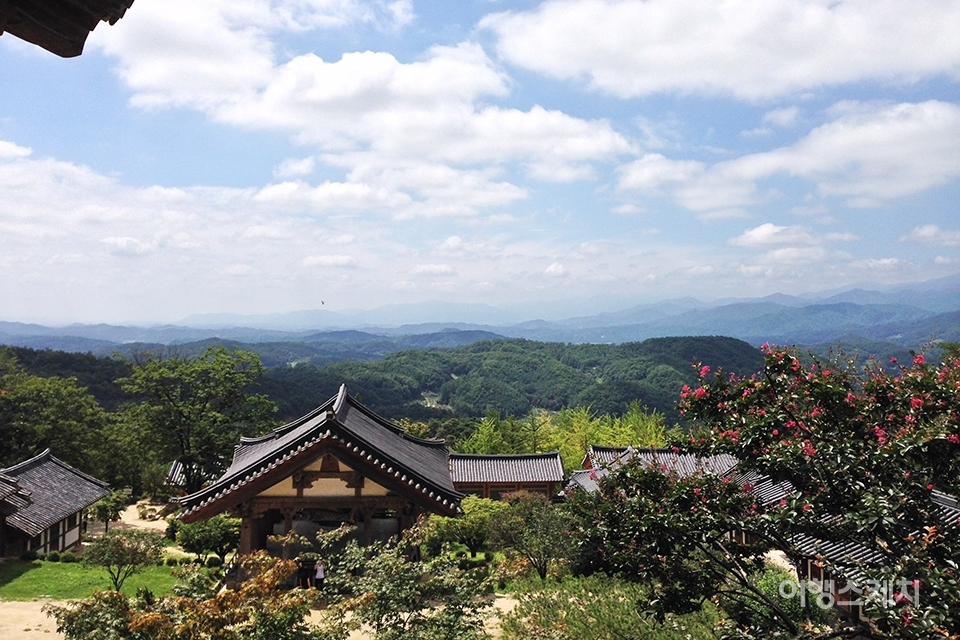
법주사, 세속을 떠난 산에서 부처님 세계로 들어가는 절
Beopju Temple, a Temple to Enter the World of Buddha After Leaving the Real World
신라시대 의신조사가 창건한 것으로 전해지는 법주사는 충북 보은의 속리산 한 기슭에 자리한다. 법주사의 정문인 금강문을 들어서면 가장 먼저 눈에 들어오는 것이 거대한 금동미륵대불이다. 신라 때 청동으로 만들어 건물 안에 모셔놓았던 미륵대불은 조선말에 헐렸으나, 1980년대에 들어 다시 청동으로 복원을 하고 2000년 초반에 금을 입혀 지금의 모양새를 갖추게 됐다. 이 대불은 용화정토에 이르러 깨달음을 설하는 미래의 미륵부처를 의미한다.
The Beopju Temple, which is said to have been founded by Silla Dynasty's Monk Uisin, is located at the foot of Mount Sokri in Boeun, North Chungcheong Province. When you enter the Geumgang Gate, the main gate of Beopju Temple, the first thing that comes into your eyes is the huge gilt-bronze Maitreya. The Maitreya Buddha, which was built in bronze during the Silla Dynasty, was demolished at the end of the Joseon Dynasty, but it was restored in the 1980s to a bronze structure in the early 2000s, and it was painted in the current shape. The Great Buddha signifies the future Maitreya Buddha, who reaches the Buddhist Elysium and preaches enlightenment.
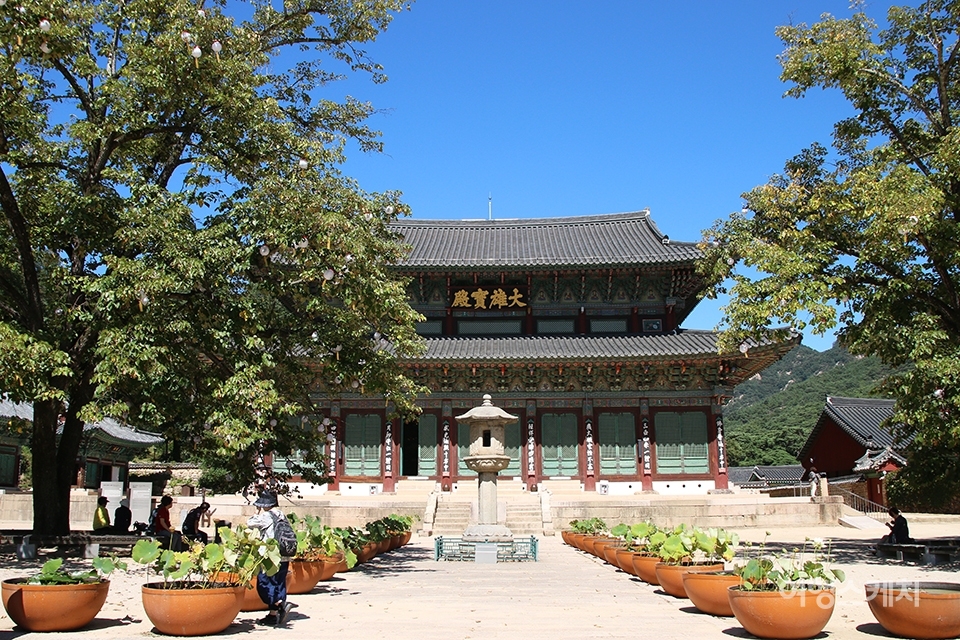
금동미륵대불 맞은편의 팔상전은 국보 제55호로, 한국에 현존하는 유일한 목탑이다. 사찰 창건 당시에 의신조사가 처음 만든 것으로 알려진 이 목탑은 정유재란 때 불타 없어졌는데, 사명대사와 벽암대사에 의해 인조 2년(1624)에 다시 복원한 것으로 전해진다.
The Palsang Hall, opposite the Maitreya Buddha, is National Treasure No. 55 and is the only wooden pagoda existing in Korea. The wooden pagoda, known to have been first built by Monk Uisin at the time of the temple's foundation, was burnt down during the Jeongyu fight. But it was restored in the second year of King Injo's reign (1624) by Monk Samyung and Monk Byukam.
이외에도 법주사는 사찰 경내 곳곳에 국보급 문화재들을 다수 보유하고 있다. 팔상전과 마주보고 있는 국보 제5호 쌍사자석등은 신라 성덕왕 때 조성된 것으로 추정되는데, 높이 10척에 이르는 8각 석등을 두 마리 사자가 마주서서 받들고 있는 형태를 하고 있다. 국보 제64호 석연지는 쌍사자석등과 같은 해에 조성된 것으로, 옛 법주사의 본당이었던 용화보전이 있었을 때 극락정토의 연지를 상징하며 화강석으로 조각한 것으로 전해진다.
In addition, Beopju Temple has a number of national treasures. The National Treasure No. 5 Twin-lion Stone Lantern, which is located opposite Palsang Hall, is believed to have been built during the reign of Queen Seongdeok of the Silla Dynasty. It is shaped by two lions holding the octagon stone lanterns, which are 2.5m high. Seok Yeon-ji, the 64th National Treasure of Korea, was created in the same year as Twin-lion Stone Lantern, and is said to have been carved into granite, symbolizing the age of the Great Lakeside when there was Yonghwa Hall, which was the main hall of Beopju Temple.
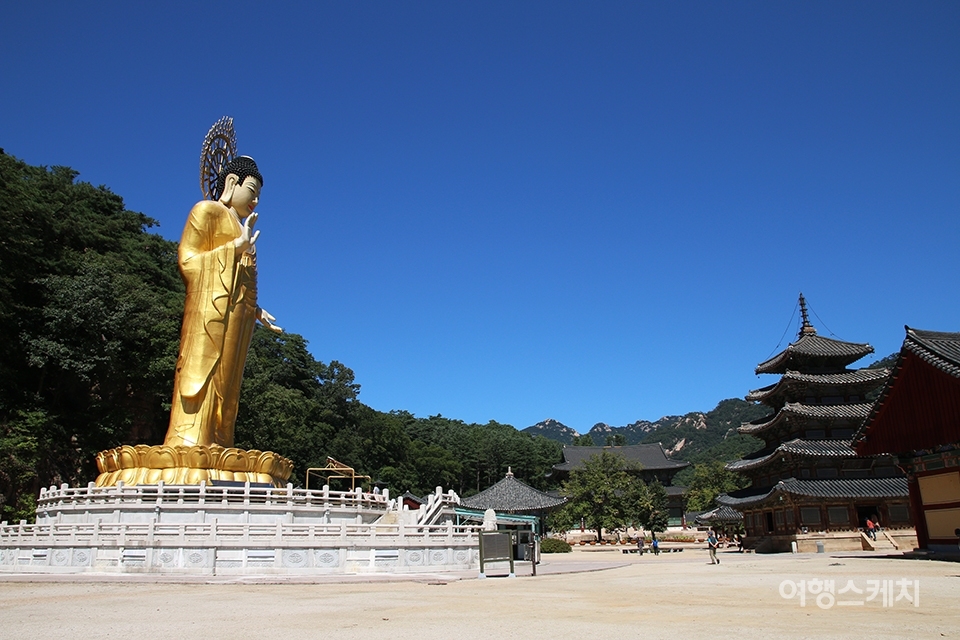
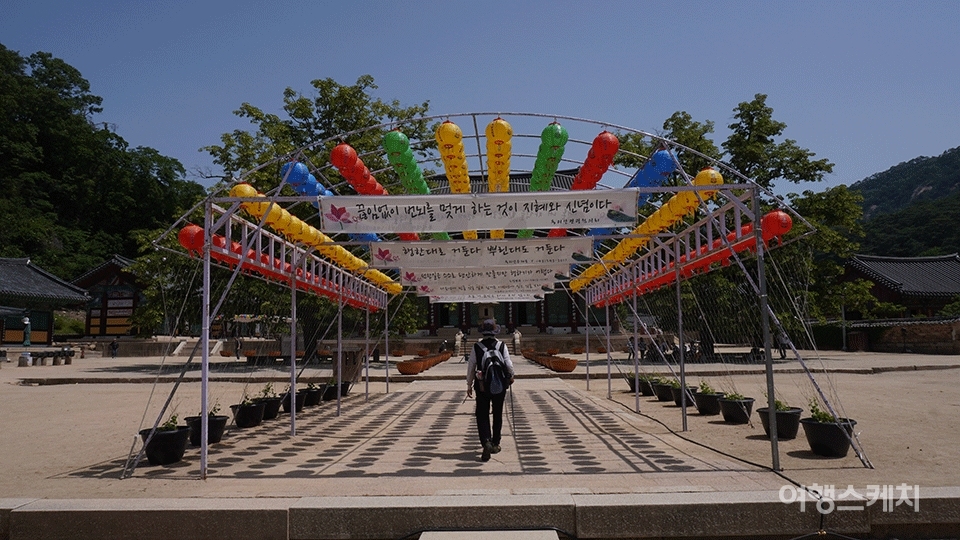
마곡사, 마곡천 물소리 들으며 마음마저 씻어내는 곳
Magok Temple, Where You Wash Your Mind with the Sound of Magokcheon
충남 공주의 마곡사는 마곡천이 흐르는 평야지대에 자리한 사찰로, 자장율사가 창건했다고 전해진다. 마곡사는 역사 속 여러 인물들과 인연을 맺어온 사찰이기도 하다. 조선시대 김시습이 스님 생활을 하던 시절 마곡사에 머물렀는데 세조가 김시습을 만나고자 찾아왔다. 소식을 미리 접한 김시습은 부여 무량사로 도피했고, 김시습을 만나지 못한 세조는 ‘내가 타고 온 가마를 타고 돌아갈 수는 없으니 소를 타고 돌아가겠다’며 한양으로 돌아갔다고 한다.
The Magok Temple in Gongju, South Chungcheong Province, is a temple located in the plains where Magokgaecheon flows, and is said to have been built by Jajangyulsa. Magok Temple has been associated with various historical figures. When Kim Si-Seup was a monk, he stayed at Magok Temple, and King Sejo came to see Kim. Upon hearing the news in advance, Kim Si-pyung fled to Moulang Temple in Buyeo, and Sejo, who could not meet Kim, reportedly returned to Hanyang, saying, “I can't go back on my own sedan chair, so I'll go back on my cow.”
또 다른 인물은 독립운동의 지도자였던 백범 김구다. 을미사변으로 살해된 명성황후의 소식에 분개해 일본인 장교를 죽인 그는 인천 교도소에 수감되어 있다가 탈출해 마곡사로 피신 온다. 이후 신분을 감추고자 머리를 깎고 중이 되었고, 1년 정도 스님 생활을 하다가 독립운동을 위해 만주로 떠났다고 전한다. 당시 머리를 밀었다는 삭발 바위가 아직도 남아있다.
Another figure is Baekbeom Kim Koo, who was the leader of the independence movement. He murdered Japanese military officer, after listening the news that Empress Myeongseong was killed by the Japanese. After being imprisoned in Incheon prison, he escaped and took refuge in Magok Temple. Since then, he cut his hair to hide his identity. And after living as a monk for about a year, he left for Manchuria for the independence movement.
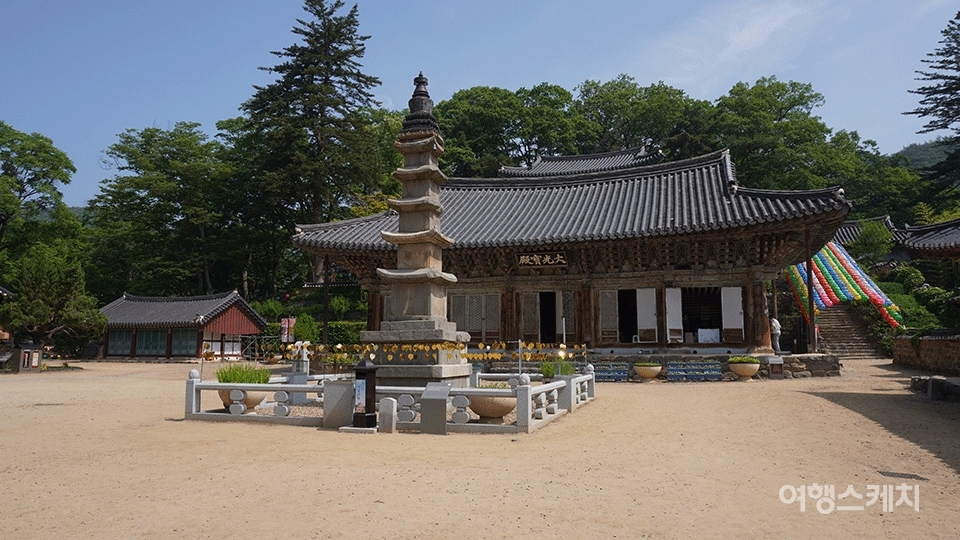
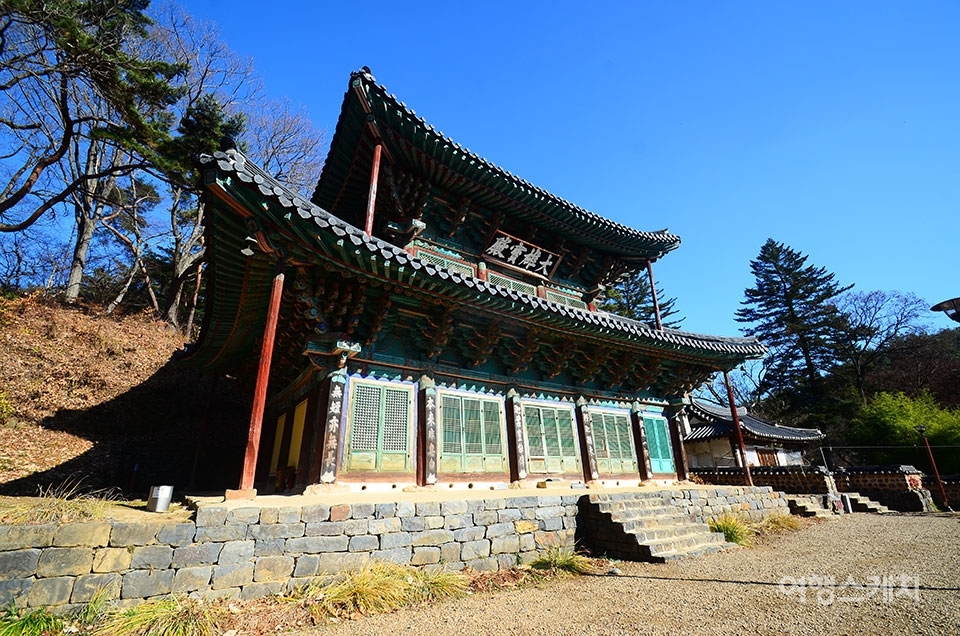
마곡사의 주요 문화재는 북쪽 구역에 모여 있다. 대광보전 앞 5층 석탑은 보물 제799호로, 탑 꼭대기에 얹어진 독특한 청동구조물이 눈길을 끈다. 몽골 원나라의 영향을 받아 만들어진 라마교 형식으로 국내에서는 유일하다. 탑 뒤편의 대광보전은 보물 제802호로 부처님을 모시는 법당이다. 대광보전 옆 계단을 오르면 보물 제801호인 대웅보전이 있다.
Magok’s main cultural assets are gathered in the northern section. The five-story stone pagoda in front of Daegwang Hall is Treasure No. 799. The unique bronze structure on top of the pagoda attracts attention. It is unique in Korea in the form of Ramaism made under the influence of the Mongolian Yuan Dynasty. Daegwang Hall, located behind the pagoda, is Treasure No. 802, and is a court that serves Buddha. If you walk up the stairs next to Daegwang Hall, you will find Daewoong Hall, the 801st Treasure.
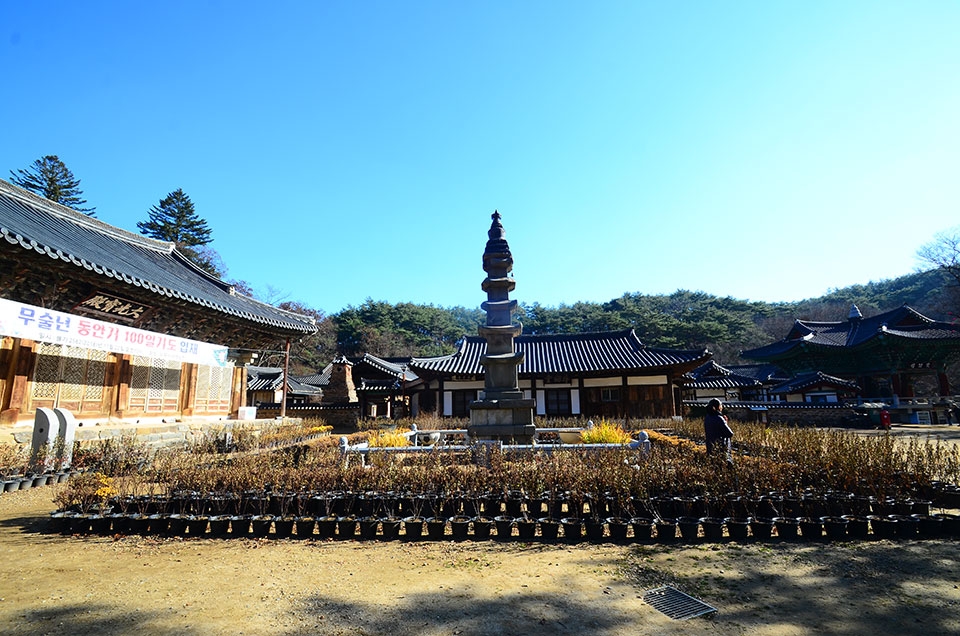
봉정사, 산 속에 숨은 듯 자리해 장구한 역사를 이어오다
Bongjeongsa Temple, Having a Long History as it Sits Hidden in the Mountain
경북 안동의 봉정사는 신라 의상대사의 10대 제자 중 하나인 능인대사가 창건한 사찰이다. 1999년 영국 여왕 엘리자베스 2세는 가장 한국적인 모습을 보고자 봉정사를 찾았고, 지난 5월에는 여왕의 둘째 아들 앤드루 왕자도 방문했다.
The Bongjeong Temple in Andong, North Gyeongsang Province, was built by Monk Neung In, one of the 10 disciples of the Silla Monk Uisang. In 1999, Queen Elizabeth II of England visited Bongjeong Temple to see its appearance. And in May, Prince Andrew, the queen's second son, also visited the temple.
봉정사의 백미는 국보 제15호인 극락전으로, 우리나라에서 가장 오래된 목조건축물이다. 신라시대의 건축 양식을 이어받은 고려시대의 건축물로서 건축학도들에게 큰 의미가 있고 일반 관람객들도 외부와 내부 천장 등을 유심히 살펴볼 만 하다. 봉정사의 법당인 대웅전은 본래 보물 제55호였다가 2009년에 국보 제311호로 승격됐다. 대웅전은 특히 다른 사찰 건물과 비교되게 전면에 툇마루를 지닌 특이한 생김새가 눈길을 끈다.
The must-see place at Bongjeong Temple is Geungnak Hall, National Treasure No. 15. It is the oldest wooden structure in Korea. The architecture of the Goryeo Dynasty, which inherited the style of architecture from the Silla Dynasty, has great significance to architects. The visitors should have a close look at the exterior and interior ceilings. Daewoong Hall, the court of Bongjeong Temple, was originally designated as Treasure No. 55, but was promoted to National Treasure No. 311 in 2009. Daewoong Hall has a unique appearance, especially compared to other temple buildings, with a wooden floor in front of it.
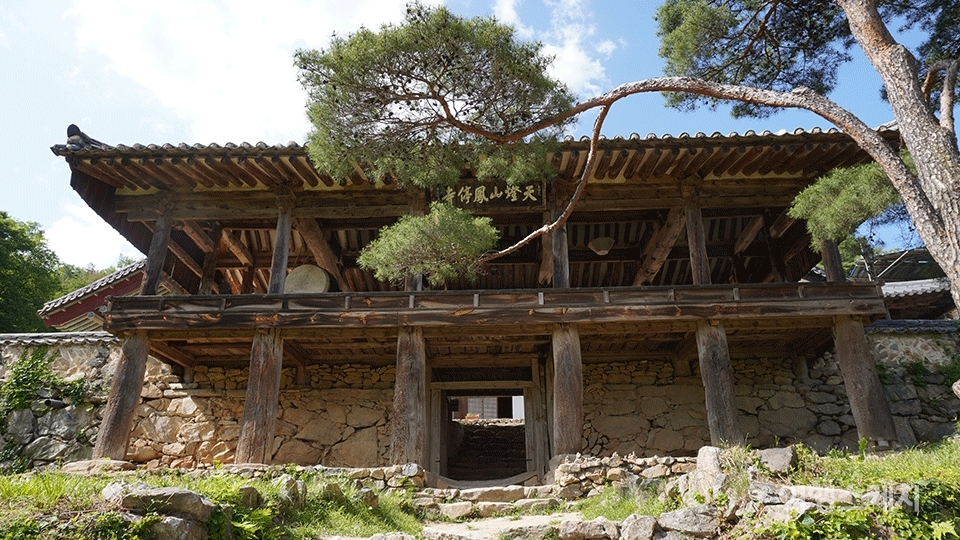
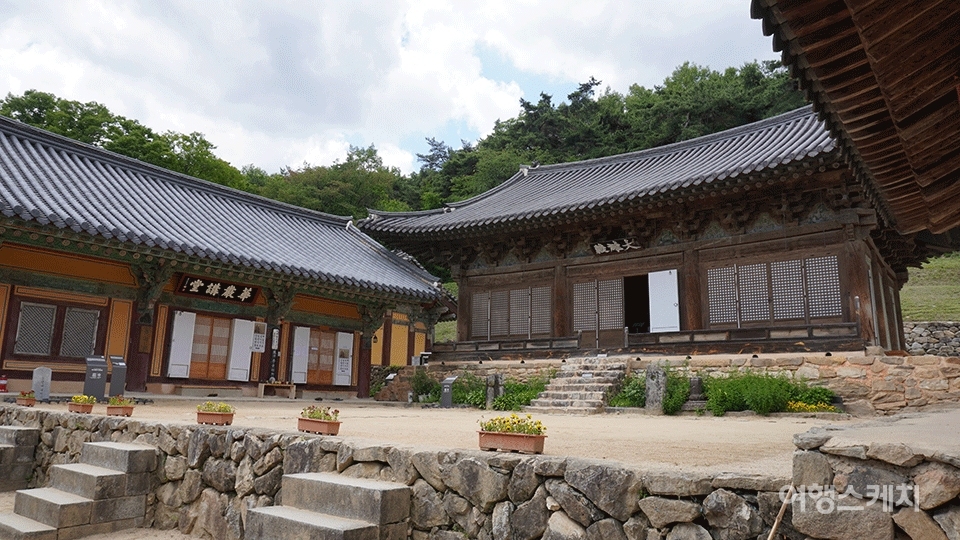
한편 봉정사가 자리한 천등산은 본래 대망산이라 불렸다. 능인대사가 대망산 바위굴에서 도를 닦고 있던 중 그 도력에 감복한 선녀가 하늘에서 등불을 내려 굴 안을 환하게 밝혀주었다고 하여 천등산이라 이름을 바꾸고, 굴 이름도 천등굴이라 하였다고 전한다.
Meanwhile, Cheondeung Mountain, where Bongjeong Temple is located, was originally called Daemang Mountain. It is said that while Monk Neung-In was cultivating himself in the cave of Daemang Mountain, the fairy who was impressed by the power lit the inside of the cave with a lantern from heaven. Since then, the name of the mountain changed into Cheondeung (heaven’s lantern) Mountain, and the name of the cave also changed into Cheondeung cave.
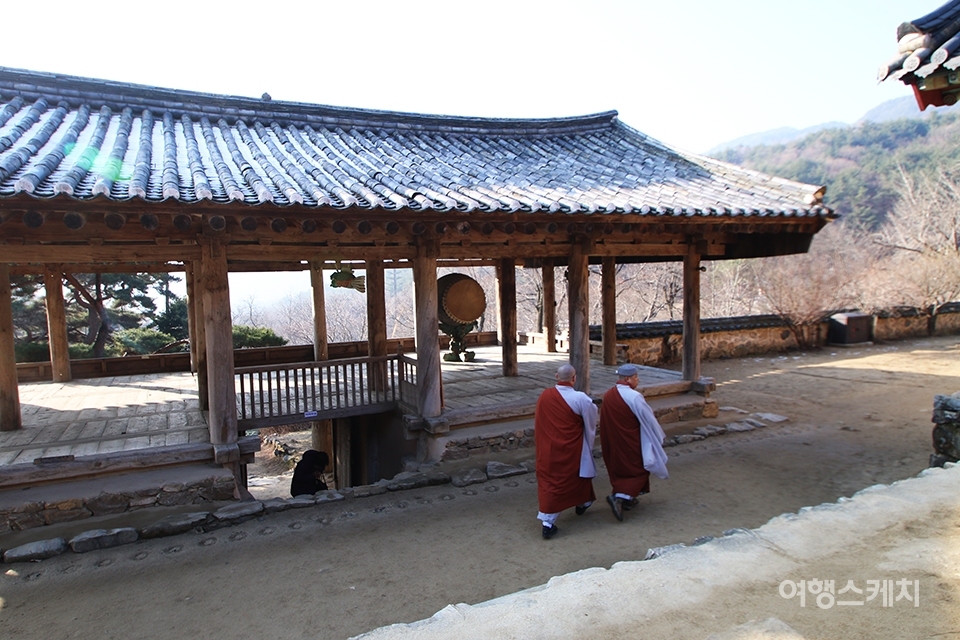
부석사, 백두대간 기운이 흘러가는 극락정토에 위치하다
Buseok Temple, Located in an Area Where the Energy of Baekdudaegan Flows
경북 영주 소백산국립공원에 속해있는 부석사는 무량수전의 존재만으로도 유명한 사찰이다. 1376년에 중수된 목조 건축물인 무량수전은 대한민국 국보 제18호이다. 건물 내부를 지탱하고 있는 배흘림기둥의 모양새와 건물 외관을 떠받치고 있는 주심포 양식 등 고려시대의 건축양식을 잘 보여주는 것으로 유명하다.
The Buseok Temple, which belongs to Sobaek Mountain National Park in Yeongju, North Gyeongsang Province, is a famous temple for its existence. Muyangsujeon, a wooden structure that was constructed in 1376, is the 18th National Treasure of Korea. It is famous for showing the architectural style of the Goryeo Dynasty, including the baeheullim style (narrow at the upper and lower part and convex at the middle of the pillar) column that supports the interior of the building and the Jusimpo style (gabled roof supported by a simple column bracket system) that supports the exterior of the building.
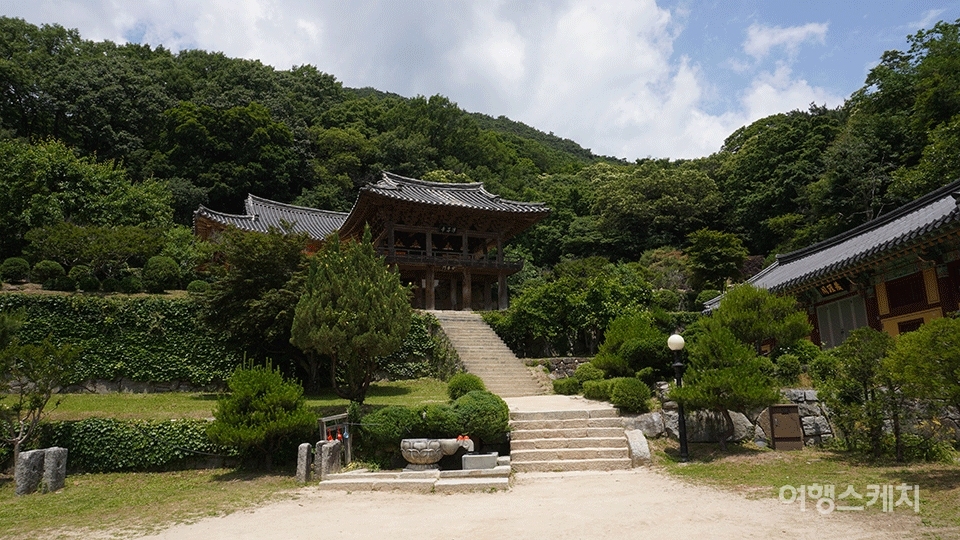
부석사는 신라시대 의상대사가 창건한 사찰이다. 의상대사가 세운 사찰 중 가장 유명한 부석사는 이름부터 특이점이 있는데, 이는 부석사 창건설화와 연관이 있다. 의상대사가 화엄학을 공부하기 위해 당나라에 갔을 때 선묘라는 여인이 의상대사를 연모했다. 의상대사가 배를 타고 귀국길에 오르자 선묘는 바다에 몸을 던졌고, 용으로 변신해 의상대사가 탄 배를 호위했다. 또 의상대사가 부석사를 지으려 할 때 이교도들이 방해하자, 용으로 변한 선묘가 바위를 공중으로 들어 올려 이교도를 물리쳤다고 한다. 그래서 그 돌은 ‘부석(浮石)’이라 부르고 사찰 이름은 부석사가 됐다는 이야기다.
Buseok Temple was built by Monk Uisang during the Silla Dynasty. Buseok Temple, the most famous Buddhist temple among the temples built by Monk Uisang, has a unique point from its name, which is related to establishment story. When Monk Uisang went to the Tang Dynasty to study Buddhism, a woman named Seonmyo adored Monk Uisang. When Monk Uisang went on his way back home by boat, she threw herself into the sea, transformed into a dragon and escorted the ship on which Monk Uisang was riding. Also, when the heathens interrupted Monk Uisang when he tried to build the Buseok Temple, Seonmyo, who turned into a dragon, lifted the rock into the air and defeated the heathens. So the stone is called "buseok"(floating stone) and the temple's name is Buseok Temple.
경내의 조사당은 국보 제19호이며 의상대사를 비롯한 역대 조사를 기리는 곳이다. 의상대사가 쓰던 지팡이가 땅에 꽂혀 나무로 자라나있는 모습을 확인할 수 있다.
The temple's Josadang is National Treasure No. 19. It is dedicated to Monk Uisang and other monks. You can see Monk Uisang's walking stick growing into a tree stuck in the ground.
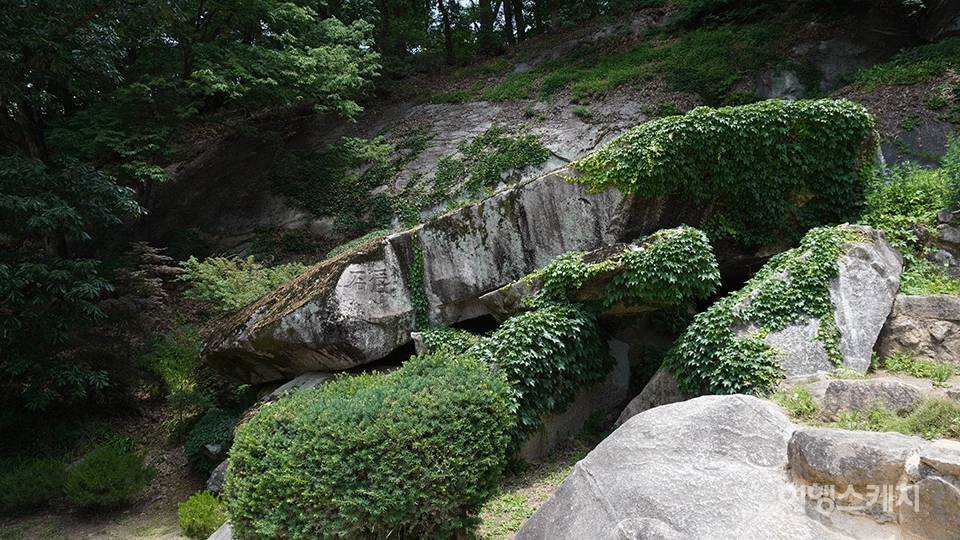
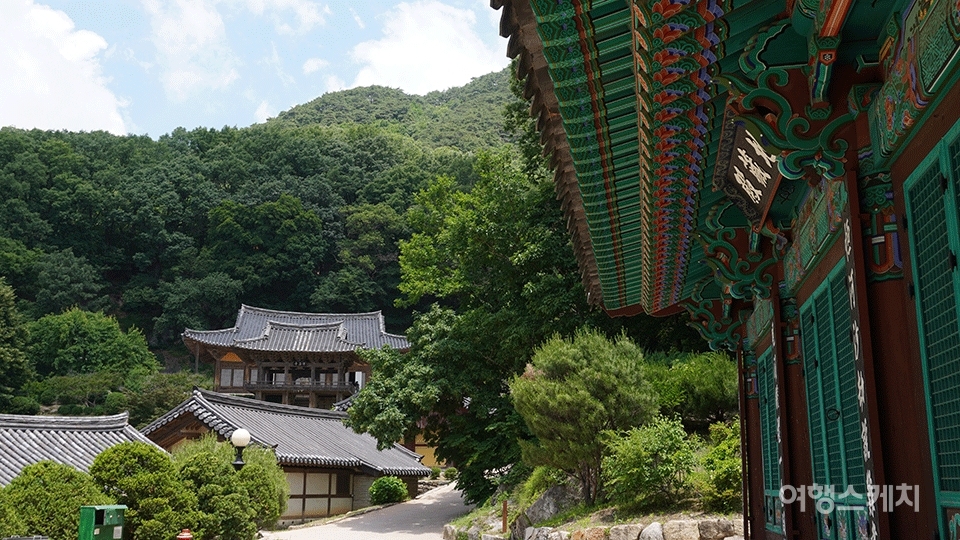
선암사, 발길‧눈길 닿는 모든 곳에서 보물을 발견하다
Seonam Temple, Finding Treasures Wherever You Go and See
전남 순천의 대표 명산인 조계산 아래에서 1000년을 넘게 이어온 선암사는 백제시대 아도화상에 의해 시작되었다고 전해진다. 선암사는 일반적인 사찰 형태와는 다른 가람 배치를 가졌다. 경내 입구인 일주문이 중앙이 아닌 동쪽에 치우쳐 있는 점과 눈에 보이는 첫 공간으로 곧장 이동하면 사찰의 중심 구역인 대웅전 마당이 나온다는 점이 그렇다. 해탈문이나 사천왕문이 없이 일주문에서 곧장 대웅전으로 연결되는 것이다.
The Seonam Temple, which has lasted more than 1,000 years under Cho-gye San, a famous mountain in Suncheon, South Jeolla Province, is said to have been started by Monk Ado during the Baekje Dynasty. Seonam Temple had a different arrangement from the usual temple forms. This is because the entrance of the temple is tilted to the east, not to the center, and if you move directly to the first visible space, you will come to Daewoong Hall, the center of the temple. The entrance is directly connected to Daewoong Hall without Haetal Gate or Sacheonwang Gate.
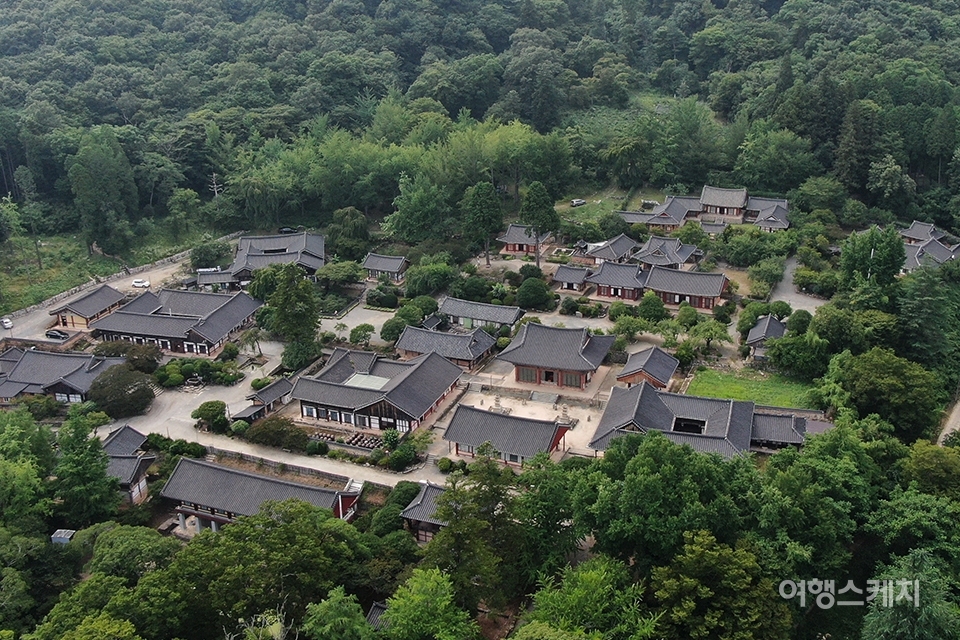
선암사는 오랜 옛날부터 차를 재배해온 것으로도 유명하다. 현재도 사찰 주변으로 약 1만 평 이상의 자생차밭으로 보유하고 있고, 꾸준히 전통 방식으로 차를 재배해오고 있다. 선암사의 차는 흔히 녹차라 부르는 일본 보급종이 아닌 인도나 중국을 통해 들어온 아삼종으로, 전통과 맥을 승계해 오고 있다.
Seonam Temple is also famous for growing tea from a long time ago. Currently, it has more than 10,000 pyeong of natural tea fields around the temple and has steadily grown tea in traditional ways. The temple's tea is not from Japanese supply chain commonly referred to as green tea, but the Asam species that came through India and China, which have inherited tradition and spirit.
대웅전 앞의 두 석탑은 선암사 동‧서 삼층석탑으로 보물 제395호다. 2단으로 이루어진 기단 위에 3층의 탑신을 올린 형태로, 크기와 제작법이 같아서 같은 사람의 솜씨로 동시에 세워진 것임을 알 수 있다.
The two stone pagodas in front of Daewoong Hall are the three-story stone pagodas in the east of Seonam Temple and are Treasure No. 395. The three-story pagodas were placed on a two-stage foundations, showing that they were built simultaneously with the same size and style of making.
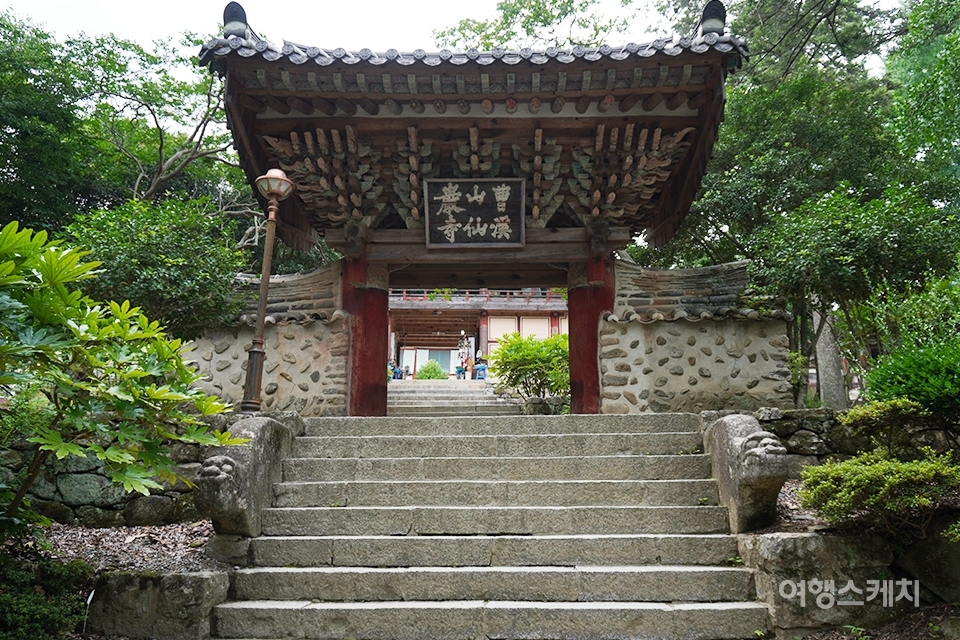
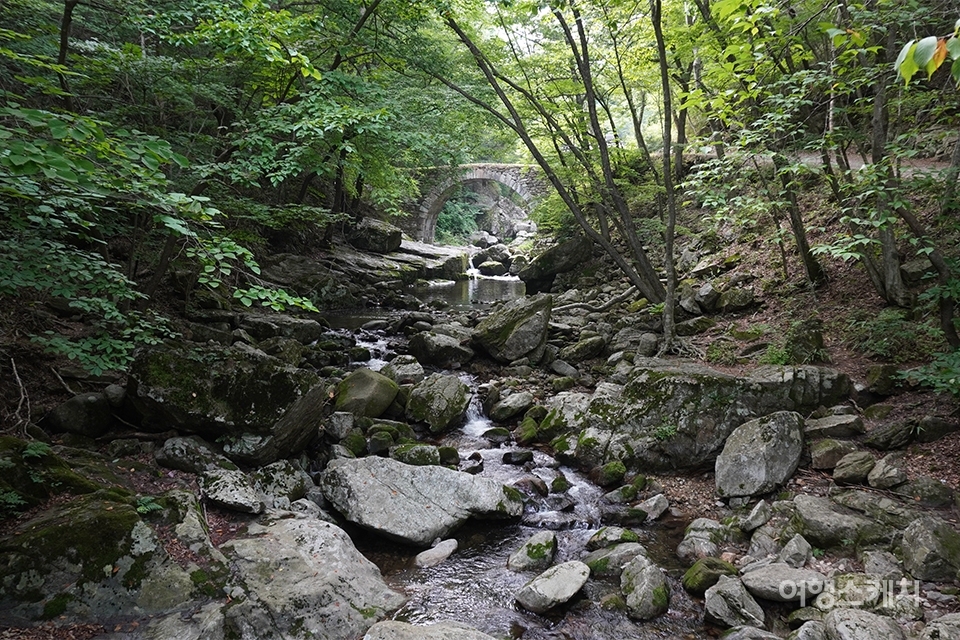
통도사, 불교 계율을 근본으로 삼아 이어온 천년고찰
Tongdo Temple, Thousand-Year Old Temple Based on Buddhist Ritual
경남 양산의 통도사는 영남알프스의 남쪽에 자리한 천년고찰이다. 사찰 뒤편을 병풍처럼 지키고 있는 영축산은 불교의 발원지 인도의 영축산과 닮았다는 의미가 담겨있다.
The Tongdo Temple in Yangsan, South Gyeongsang Province, is a millennium-long Buddhist temple located in the south of the Yeongnam Alps. Yeongchuk Mountain, which guards the back of the temple like a folding screen, is similar to Yeongchuk Mountain in India, the birthplace of Buddhism.
통도사는 본당인 대웅전 내에 불상이 모셔져 있지 않은데, 대웅전 옆의 금강계단 위 부처님 진신사리를 봉안한 불사리탑을 부처님으로 보기 때문이다. 대웅전 내에는 불단만 조성되어 있고 유리를 통해 불사리탑을 보며 절을 하도록 만들어졌다. 불사리탑은 통도사의 중심이며, 과거 스님이 되고자 하는 사람은 통도사 금강계단을 통해야 했다고 전해진다.
The Tongdo Temple does not have a statue of Buddha inside its main building, Daewoong Hall because the Buddha's statue enshrined above the Geumgang stairs is regarded as Buddha. Inside Daewoong Hall, only a Buddhist altar was built and it was built to bow to the pagoda through glass. The pagoda is said to be the center of Tongdo Temple, and those who wanted to become monks in the past had to go through the steps of Tongdo Temple's Geumgang stairs.
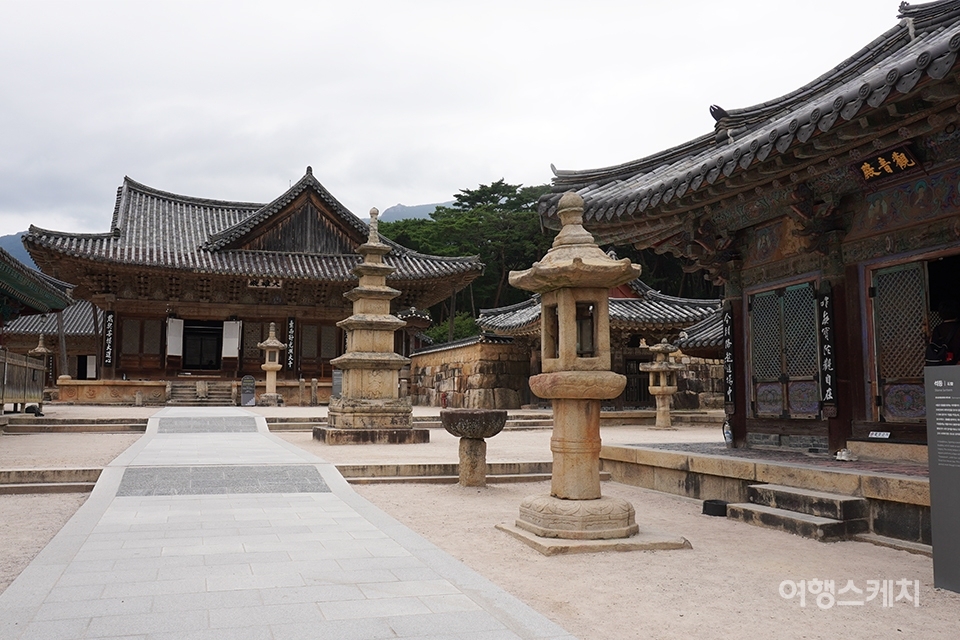
통도사는 큰 사찰인 만큼 규모도 넓고 각각의 의미가 담긴 전각들이 많다. 경내는 상로전, 중로전, 하로전으로 구역을 구분하는데, 대웅전과 금강계단 등이 있는 곳이 상로전이고 계단 바로 아래 전각들이 있는 곳은 차례로 중로전과 하로전이다. 상로전을 방문해 국보 제290호 대웅전에서 참배를 하고 뒤편 금강계단을 탑돌이하면 효율적인 참배를 할 수 있다.
The Tongdo Temple has many large meaningful palaces. Inside the temple, sections are divided into Sangnojeon (Upper side), Jungnojeon (mid side), and Harrojeon (lower side). Sangnojeon is located in Daewoong Hall and Geumgang stairs. Right below the stairs are Jungnojeon and Harrojeon. After visiting Sangnojeon and worshiping at Daewoong Hall No. 290, visitors can go to the Geumgang stairs behind them for an efficient visit.
금강계단은 사리탑 보존을 위해 지정된 날에만 출입할 수 있다. 참배일은 음력 초하루~초삼일과 음력 보름, 음력 18일과 음력 24일이며 참배시간은 오전 11시부터 오후 2시까지다.
Geumgang stairs are only accessible on designated days for the preservation of the Sarira pagoda. The visiting days are from 1st to 3rd days on the lunar calendar and the 15th, 18th, and 24th days. The visiting hours are from 11 a.m. to 2 p.m.
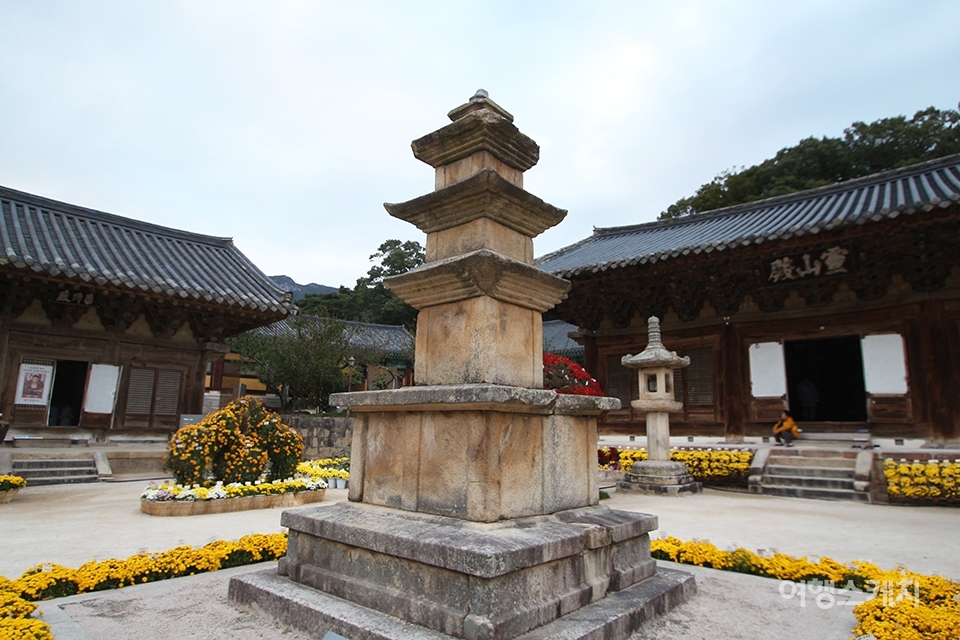
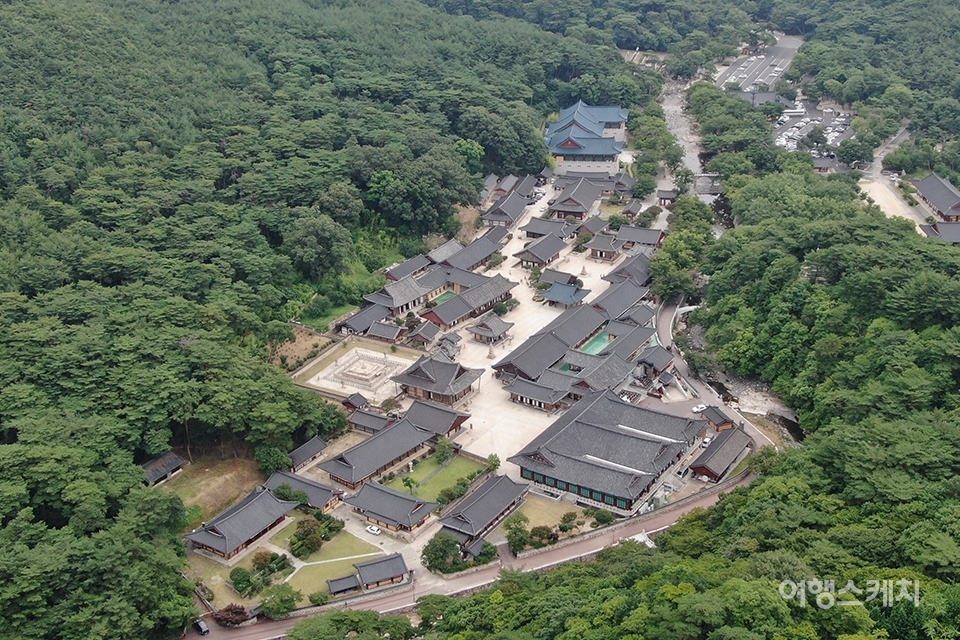
대흥사, 두륜산 가운데 피어난 불가의 역사
Daeheung Temple, History of Buddhism in the Middle of Duryunsan Mountain
땅끝마을 해남에 자리한 대흥사는 두륜산이 주변을 감싸고 있는 모양새다. 대흥사 창건에 대해서는 크게 두 가지 설이 있다. 첫 번째는 신라시대 정관존자의 창건설인데 생애나 활동 내용이 알려져 있지 않은 인물이어서 큰 힘을 받지 못하고 있다. 두 번째는 <죽미기>라는 자료에 544년 아도화상이 창건했다고 기록돼 있어, 현재 사찰 내에서는 대체로 아도화상의 창건설을 따르고 있다.
The Daeheung Temple, located in Haenam at the end of the land, seems to be surrounded by Mount Duryun. There are two main theories about the creation of Daeheung Temple. The first is the construction by Jeonggwanjonja during the Silla Dynasty, but the details of his birth or death are unknown. So the first theory has not gained much credibility. The second theory is the construction by Monk Ado. "Jeukmi-gi" states that Monk Ado established the temple in 544 and people now generally follow the second theory.
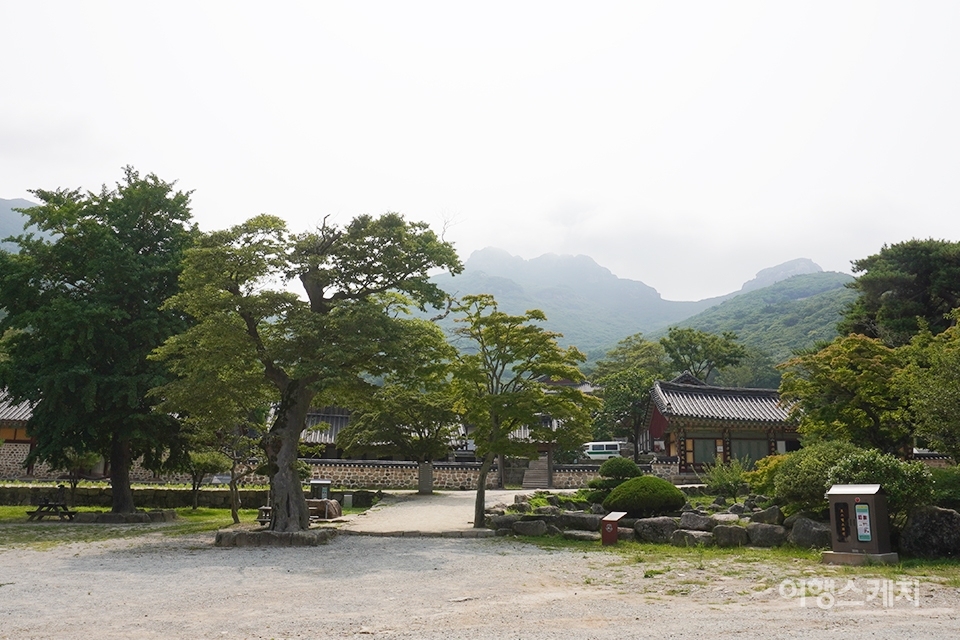
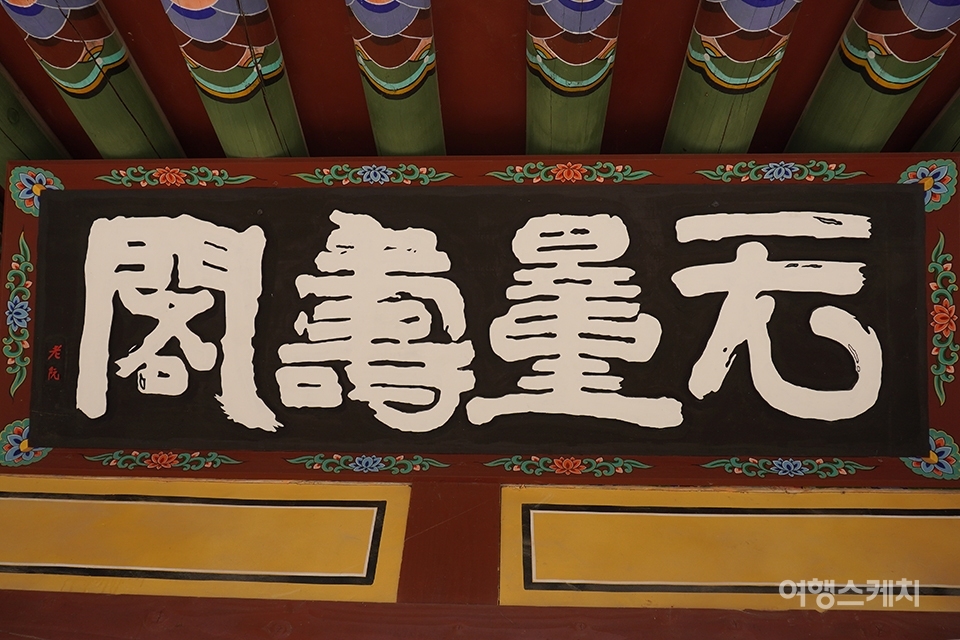
대흥사가 이름을 알린 것은 명승들의 활동에 의해서다. 임진왜란 때 승병을 이끌고 나라를 지킨 서산대사, 차를 재배하며 한국의 차 문화에 큰 영향을 미쳐 다성(茶聖)으로도 불리는 초의선사 등이다. 또 대웅보전 편액에는 추사 김정희와 관련된 이야기도 전해져 내려온다.
It was through the activities of great monks that Daeheung Temple became famous. They include Monk Seosan, who fought against the Japanese invasion of Korea and protected the country, and Monk Cho-eui, also called Dasung, who grew tea and made a big impact on Korea's tea culture. In addition, stories related to Chusa Kim Jung-hee are also reported in the Daewoong Hall’s tablet.
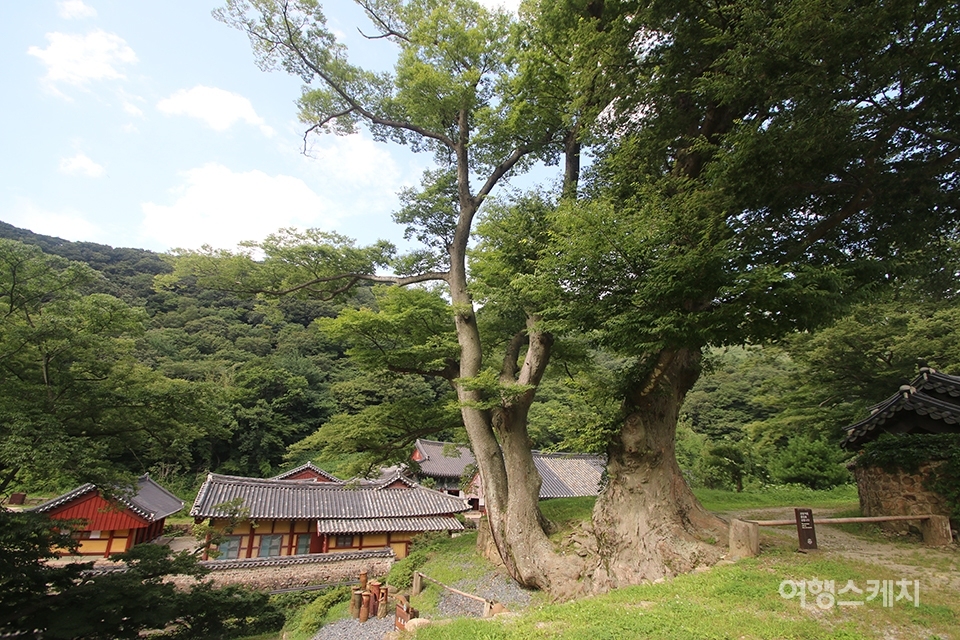
대흥사의 본당인 대웅보전이 있는 북원에는 응진당, 산신각, 명부전 등이 가지런히 자리 잡고 있다. 금당천을 건너 남원 구역으로 오르는 계단에서는 두 나무가 만나 합쳐진 연리근을 만날 수 있다. 대흥사가 보유하고 있는 문화재들을 더 보고 싶다면 성보박물관을 들러야한다. 서산대사의 의발, 김정희가 쓴 무량수각 편액의 진품 등을 전시하고 있다.
In Bukwon, where Daewoong Hall (the main building of Daeheung Temple) is located, the Neungjindang Hall, Sanshingak, and Myeongbujeon Hall are in order. On the stairs leading across Geumdang Stream to the Namwon district, you can meet Yeonri-geun, which is a joined two-trees. If you want to see more of the cultural assets held by Daeheung Temple, you should visit the Sungbo Museum. The museum displays the garments of Monk Seosan and the genuine tablet of Muryangsugak, written by Kim Jeong-hee.
❖본 기획 취재는 국내 콘텐츠 발전을 위하여 (사)한국잡지협회와 공동 진행되었습니다.


